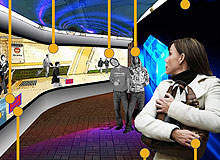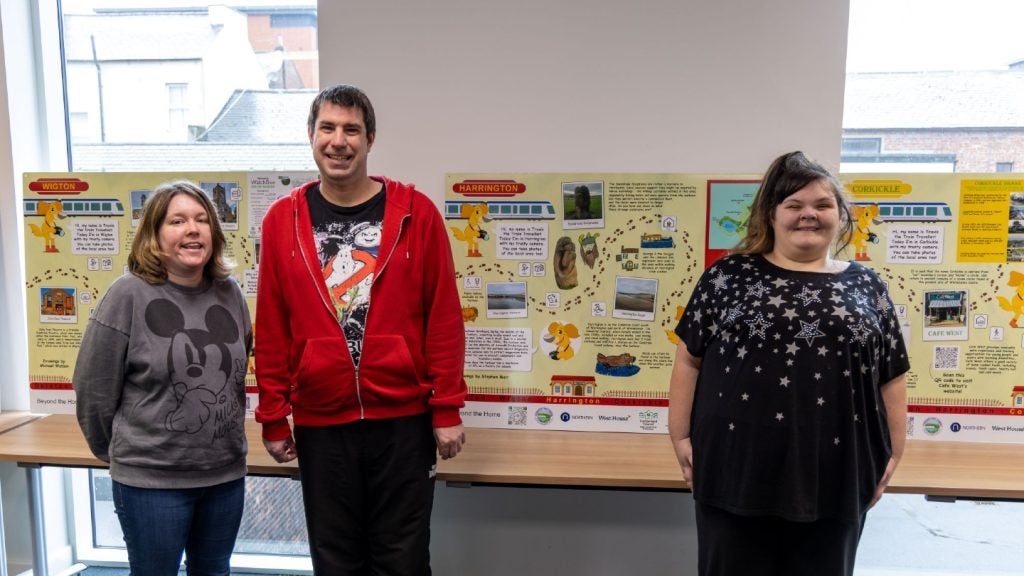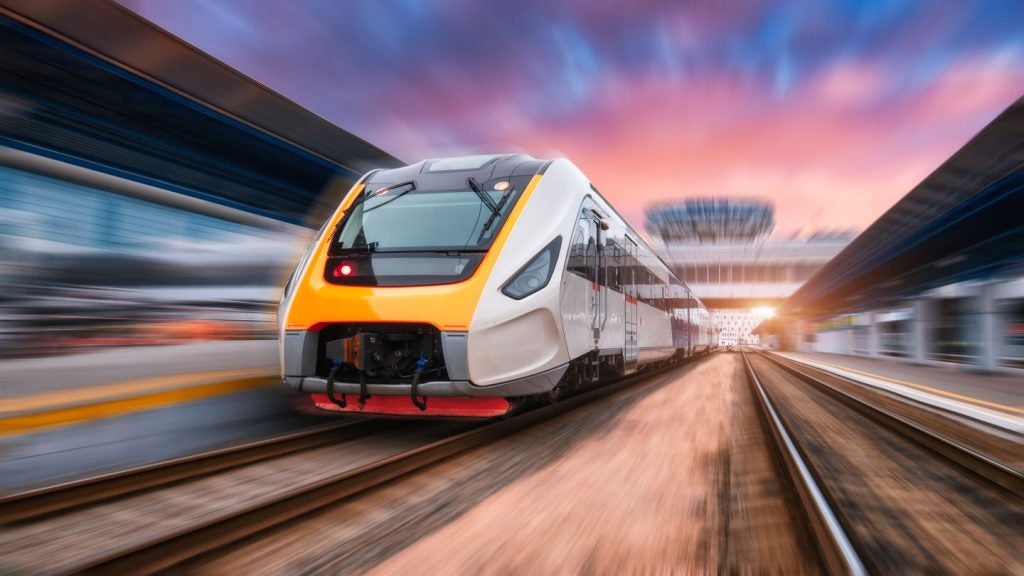
The number of rail passengers worldwide topped 2,600 billion in 2009 – a figure which continues to grow. But as congestion and crime increase too, in line with passenger demand, new systems to manage passenger flow, improve wayfinding, ensure revenue and improve security are more important than ever before.
At the same time digital technologies are becoming more and more widespread and devices such as smartphone technology, near field communication (NFC) and radio frequency identification (RFID) are being incorporated into our urban environment, improving the experience of rail travel.
Yet while the technology is there, it seems the integration between station architecture and digital technology is taking its time.
For this reason the University of Technology in Sydney (UTS) and University of Sydney carried out a research project, which is presented in its book Infostructure: A Transport Research Project.
It explored the future of interactive and responsive urban public transport environments where new forms of communication are proposed via an overlay of urban digital media technologies.
See Also:
Central Station in Sydney was used a model and the ideas have yet to be prototyped, but the concepts can be considered for any railway station structure in any country.
How well do you really know your competitors?
Access the most comprehensive Company Profiles on the market, powered by GlobalData. Save hours of research. Gain competitive edge.

Thank you!
Your download email will arrive shortly
Not ready to buy yet? Download a free sample
We are confident about the unique quality of our Company Profiles. However, we want you to make the most beneficial decision for your business, so we offer a free sample that you can download by submitting the below form
By GlobalDataGo with the flow
With 77% of the world population as mobile phone subscribers and smartphones showing the strongest growth – according to the International Data Corporation (IDC) vendors shipped a 100.9 million smartphones during the fourth quarter of 2010, up 87.2% from the same quarter in 2009 – the potential to use this technology to improve payment and communication systems in transport and other industries is evident.
To reduce congestion caused by passengers purchasing tickets at Central Station, UTS Master of Architecture student Dominic Fedrigo first studied the series of actions a passenger takes in order to board a train: enter the station, purchase a ticket, get train information and walk to the platform.
To improve this he proposed a change in sequence that would be supported through the ticket purchase via a smartphone using NFC.
Ticketing, information and platform entry points were placed outside the station, freeing up pedestrian circulation networks inside the station building.
Tickets, purchased online through the iphone app (60% of mobile phone users in Australia use smartphones), were colour coded to match the LED coloured lighting that illuminated the external entry points to the user’s platform destination.
“What needs to be pointed out is that of course some commuters don’t have that type of technology,” said Dr. M. Hank Haeusler, a postdoctoral fellow at UTS who has been overseeing the Infostructure project, with Nicole Gardner from UTS and Dr Martin Tomitsch from University of Sydney, and is passionate about integrating digital technology into the built environment.
“You can’t exclude more conventional systems as some user groups don’t have access to smartphone technology. As a user you should be able to use whatever payment system you want and at some point one system might become more popular than the other and therefore extinguish the older one, as seen with the tokens used for public transport in New York’s subway.”
Individual responsibility for a secure station
With incidents of theft, trespass and violence all too common in and around railway stations worldwide, the student group questioned the standard CCTV system to create one where the cameras are used proactively.
“The notion the students had is that you don’t actually know if operators are watching from behind the camera,” says Haeusler. “The idea is that we watch each other enabled through digital technologies and are therefore taking care of others.”
This system, designed by student Anna Ganko, works by installing interactive screens in various sections of the station – in this case the design focuses on the set up in an underground tunnel system. Each site plays realtime CCTV footage that is recorded and beamed onto the walls of parallel tunnels for easy viewing by all travellers.
Help points are located near the cameras at regular intervals.
Often commuting via rail becomes all too passive and this system encourages people to participate and be aware for fellow passengers. Participation could be enhanced through video games, as travellers could play against each other while working through the tunnels.
LEDs lighting the way forward
Effective wayfinding in a station is important to keep passenger movement flowing. One of the most challenging aspects is to ensure that signage is not obscured as wall and floor surfaces are often concealed by passenger traffic, especially in rush hour.
Information about the train service, departure and arrival times and platforms are constantly changing and essential, but are typically displayed on digital screens that are static which can disrupt the flow of users and cause congestion.
Master of Architecture student Christian Moi created a wayfinding system that depends on an interactive illuminated ceiling system that connects LEDs in a cross-work pattern. When the modules light up on the grid, arrows are displayed that guide passengers to the correct location in the station.
The LED system is also colour coded meaning passengers follow the colour that corresponds to the particular train line they need to take, meaning passenger flow should be consistent to the destination. Should an emergency occur the lighting could pulse at a greater rate in red and direct passengers towards the nearest exit.
“This system works well because when the station is crowded, passengers can look up, which takes away from the normal static signage they are constantly looking for, as there is a continuous line,” said Nicole Gardner, co-author of the book Infostructure: A Transport Research Project and lecturer and PhD candidate at UTS.
No shame, no gain
A major location for traveller congestion is at ticket barriers. Student Oliver Petrie’s design opened up the station completely by introducing the idea of a barrierless ticketing system that also incorporated a revenue protection strategy. The system works on the assumption that all users have RFID-embedded tickets.
These are detected by RFID antennas in the floor and tracked by an RFID radar system; there are also sensors on the floor that detect a passenger’s footfall. When a ticketless customer is identified, LEDs in the floor below glow red wherever the passenger goes, ‘shaming’ them into purchasing a ticket.
“This is a bold idea, but what is successful about it is that he has taken a number of different technologies and thought about how they might work together – the surface has become informational,” says Gardner.
Tracking ahead
The reality of seamless integration of digital technologies into a station’s architecture seems a long way off it. But is it really? In countries such as Japan and South Korea, consumers already use NFC-equipped phones to make payments and trials have been carried out in London, the US and Germany. Just last month Deutsche Bahn announced commuters would be able to use the NFC system Touch&Travel to pay for their rail tickets after testing the system since 2008.
The Infostructure project has looked at how digital technology and architecture can integrate to create a completely informational environment within a train station. Its fresh, innovative approach has caught the attention of rail companies and garnered much interest so far – the team has just been awarded a Linkage Grant from the Australian Research Council to work with Arup, Grimshaw Architects, the city of Sydney, Transport New South Wales and Railcorp on developing ideas further.
“That’s one of the great things about the university environment, we can begin prototyping some of these ideas which otherwise might have been leftfield and impossible,” said Gardner.





